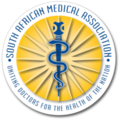Research

Leveraging the Road to Health booklet as a unique patient identifier to monitor the prevention of mother-to-child transmission programme
Abstract
Background. Currently there is no unique patient identification system in the South African public health sector. Therefore, routine laboratory data cannot effectively be de-duplicated, thereby hampering surveillance of laboratory-diagnosed diseases such as mother-to-child transmission of HIV.
Objectives. To determine the uptake of Road to Health booklet (RTHB) identifiers at HIV polymerase chain reaction (PCR) birth test and describe their performance in linking follow-up test results in the early infant diagnosis programme.
Methods. Between May 2016 and May 2017, Tshwane District Clinical Services implemented a unique patient identifier pilot project in which a sticker-page of unique, readable, barcoded patient identifiers was incorporated in the patient-retained immunisation record (the RTHB) before distribution. Uptake of RTHB identifiers at birth was calculated as the proportion of HIV PCR tests in infants aged <6 days registered with an RTHB identifier over the total number of registered HIV PCR tests. Descriptive analysis of demographic details was performed among infants with two registered HIV PCR tests linked by the RTHB identifier, and performance of the National Health Laboratory Service Corporate Data Warehouse (NHLS CDW)-linking algorithm in matching RTHB-linked results was calculated using a 2 × 2 table.
Results. A total of 5 309 HIV PCR birth tests registered with an RTHB identifier were extracted from the NHLS CDW over the 13-month period of the pilot project. The number of registered RTHB identifiers increased from 24 (2% of birth PCR tests) in May 2016, peaking at 728 (56% of birth PCR tests) in May 2017. Among infants with a registered RTHB identifier at birth, 635 (12%) had a subsequent linked HIV PCR test, as indicated by the same RTHB number registered for a later specimen. Demographic details at the time of birth and subsequent PCR test were compared, demonstrating that <4% of infants had exact matches for name, surname, date of birth and sex; 74% of birth tests had variations such as ‘born to’ or ‘baby of ’ in place of a first name; surnames matched exactly in 61% of cases; 18% (n=116) of infants had both tests performed at the same facility, of which only 27% (n=31) had the same patient folder number on both test results.
Conclusions. Leveraging RTHBs as unique patient identifiers, even if used temporarily until linkage to other future national unique identifiers, promises to be an effective scalable approach to laboratory-based surveillance, facilitating healthcare provider access to all test results from birth.
Authors' affiliations
A Haeri Mazanderani, Centre for HIV and STIs, National Institute for Communicable Diseases, National Health Laboratory Service, Johannesburg; and Department of Medical Virology, Faculty of Health Sciences, University of Pretoria, South Africa
G G Sherman, Centre for HIV and STIs, National Institute for Communicable Diseases, National Health Laboratory Service, Johannesburg; Department of Paediatrics and Child Health, Faculty of Health Sciences, University of the Witwatersrand, Johannesburg; and Paediatric HIV Diagnostics Syndicate, Wits Health Consortium, Johannesburg, South Africa
F Moyo, Centre for HIV and STIs, National Institute for Communicable Diseases, National Health Laboratory Service, Johannesburg; and Paediatric HIV Diagnostics Syndicate, Wits Health Consortium, Johannesburg, South Africa
A E Goga, Health Systems Research Unit, South African Medical Research Council, Cape Town; and Department of Paediatrics and Child Health, Faculty of Health Sciences, University of Pretoria, South Africa
U Feucht, Department of Paediatrics and Child Health, Faculty of Health Sciences, University of Pretoria; and Tshwane District Clinical Specialist Team, Pretoria, South Africa
Full Text
Keywords
Cite this article
Article History
Date published: 2018-08-30
Article Views
Full text views: 1443

.gif)


_web.gif)
Comments on this article
*Read our policy for posting comments here